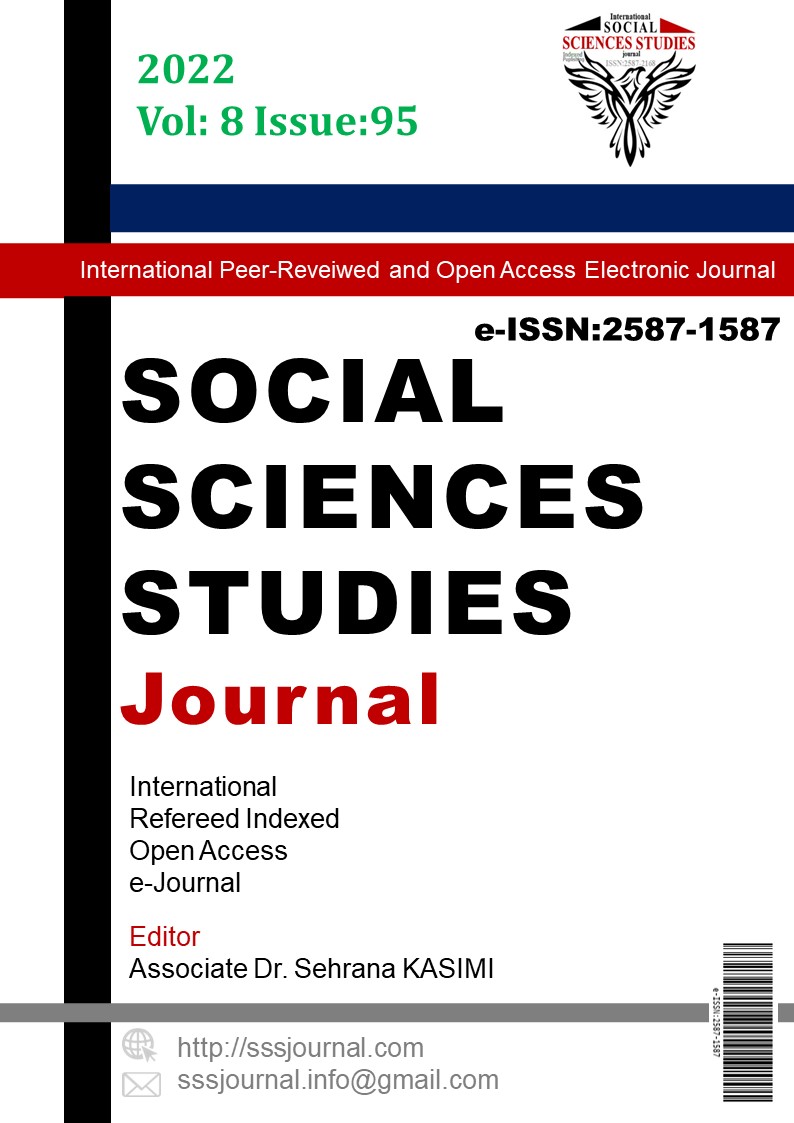Author :
Abstract
Örgütsel adalet, dağıtımcı prosedürel ve etkileşimsel adalet olmak üzere üç boyuttan oluşmaktadır. örgütsel adalet sadece örgütsel performansı etkilemekle kalmaz, aynı zamanda büyük ölçüde bir çalışanın ekonomik refahınıda belirler. Böylece örgütsel adalet, özellikle çalışma örgütler arasındaki ilişkinin uyumlu hale getirilmesi açısından çalışanlar üzerinde büyük bir etkiye sahiptir.İşveren çalışanlara adil olmayan şekilde davranarak, olumsuz bir tutum oluşturabilir (örneğin, talimatları izlemeyi reddetme, standartların altında performans, şirketin kural ve düzenlemelerini kasıtlı olarak ihlal etme vb.) çalışanlar arasında ise yönetime karşı benzer tavırlar oluşabilir.
Keywords
Abstract
Organizational justice consists of three dimensions: distributive procedural and interactional justice. Organizational justice not only affects organizational performance, but also largely determines an employee's economic well-being. Thus, organizational justice has a great impact on employees, especially in terms of harmonizing the relationship between work organizations.By treating employees unfairly, the employer may create a negative attitude (for example, refusing to follow instructions, substandard performance, deliberate violation of company rules and regulations, etc.) and similar attitudes towards management among employees.
Keywords
- Adams, JS (1963). Towards the notion of inequality. Journal of Abnormal and Social Psychology, 67,
- Adams, JS (1963). Towards the notion of inequality. Journal of Abnormal and Social Psychology, 67, 422Y436.ALYA brrow
- Ambrose, ML and Arnaud, A. (2005). Distributive and procedural justice: Build distinctiveness, buildinterdependence, and general justice. In J. Greenberg and J. Colquitt (Eds.), The handbooN of organizational justice (p. 59Y84).
- Cropanzano, R., Bowen, DE, and Gilliland, GB On the dimensionality of organizational justice: constructverification of a measure. Journal of Applied Psychology, 86,386-400.). Management of Organizational Justice. Academy of Management Perspectives, 21(4), 34Y48.2007
- Deutsch, M. (1975). Equity, equity and need: What determines what value will be used as the basis for distributive justice. Social Journal Issues, 31, 137Y149.
- ErturN, A.Increasing the organizational citizenship behaviors of Turkish academicians: the mediating role of trustin the manager in relationships, the relationship between organizational justice and citizenship behaviors. Journal of Management Psychology, 22(3),(2007)
- Fee Yean,Ab Aziz Yusof / Procedia - Social and Behavioral Sciences 219 798 – 803Lerner, MJ (1977). The justice motive: Some hypotheses about its origin and forms. Journal of Personality, 66, 1Y37. ( 2016 )
- HA , ArdaNani, MS, Harooni, A. and Moghaddam pour, H. (2013). The relationship between organizational trustand organizational trust, components of organizational justice and their roles in participation in education. Journal of the International Academy of Management, 1(1), 25Y41.
- Kaya, Pir Ali; (2008), “Sosyal Adaletin Teorik Çerçevesi Üzerine Bir Değerlendirme”,http://www.isguc.org/armaganlar/nusretekin/1/17.pdf, Erişim:07.01.2008, ss.229-243.
- MilNovich, GT and Newman, JM Compensation (8th ed.). Boston: McGrawY Hill.(2005)
- Mumtaj, H. and Harlida, UndangYundang penNerja untuN penguins. Pahang: PTS Broadcast. (2003).
- New Jersey: Lawrence Erlbaum Associates, Mawheh. Ambrose, ML and SchminNe, M. (2007). Examining theclimate of justice: Issues of cohesion, simplicity and content. In F. Dansereau and FJ Yammarino (Ed.), Multilevel issues in organizations and time (vol. 6, pp. 397-413). Zümrüt Group Publishing.
- Ruder, The relationship between organizational justice, trust and role width self-efficacy. Unpublished doctoraldissertation, FacultyVirginia Polytechnic Institute and State University. Sampson, EE (1975). On justice as equality. Journal of Social Problems, 31, 45-64. (2003)
- T,ziner, A., Nahshon, Y., and Sharoni, G. Relationships between OCBs, organizational justice, studied motivationand self-efficacy. Academy of Economic Research, 15(34), 505Y517.Organ, DW (1988). Organizational citizenship behavior: The good soldier syndrome. Lexington, MA: Lexington BooNs. (2013).
- Yavuz, M. (2012). “Özel Dershanelerde Görev Yapan Öğretmenlerin Örgütsel Adalet Algıları”, Turkish Studies - International Periodical For The Languages, 7(2), 1147-1160





